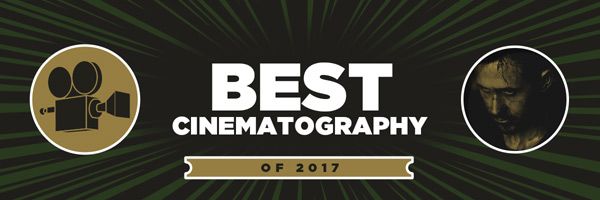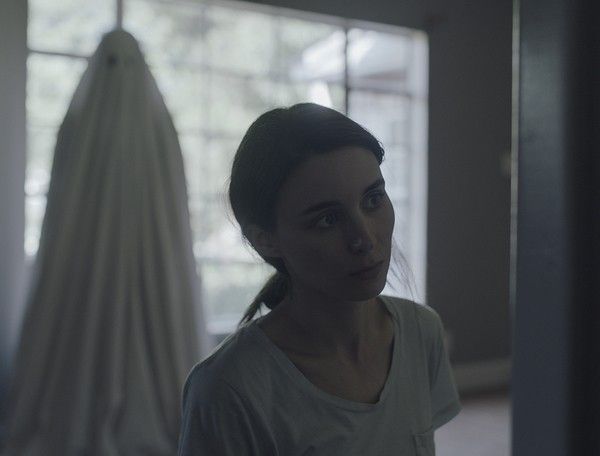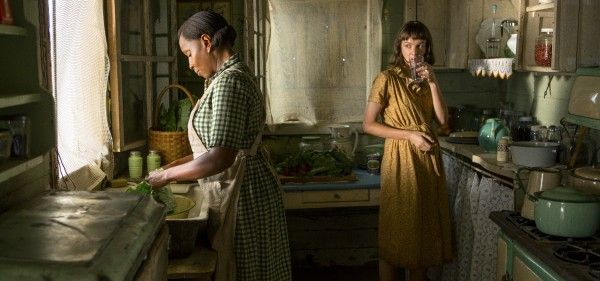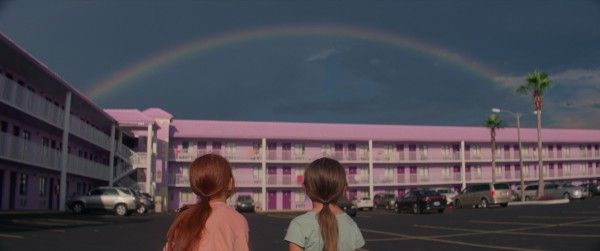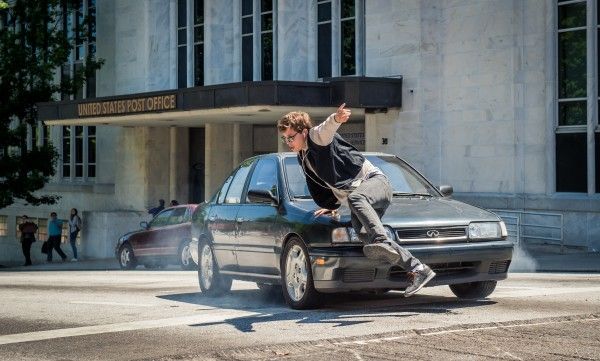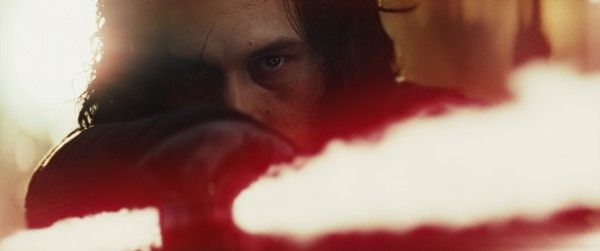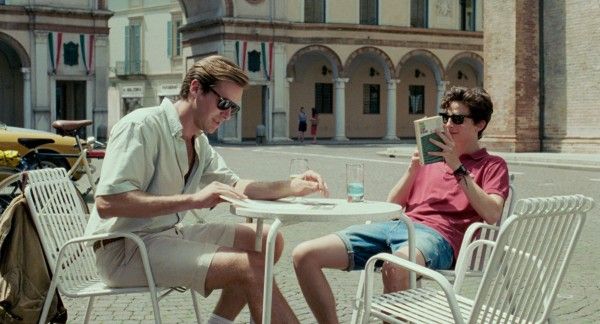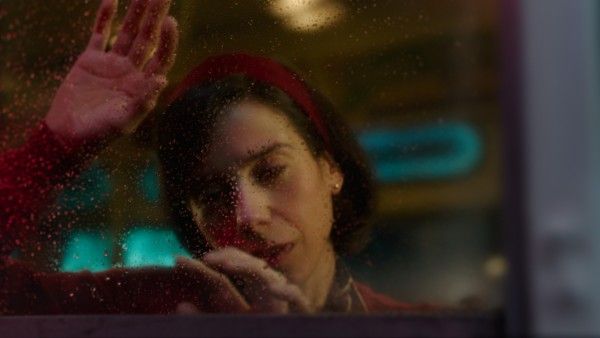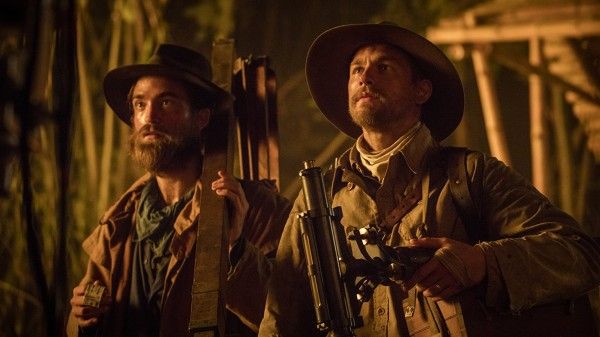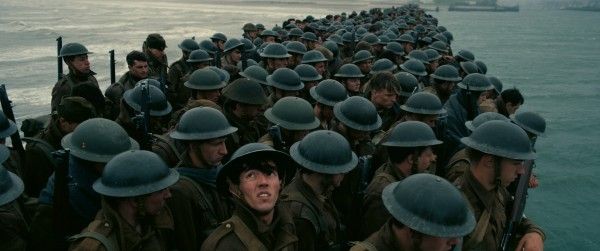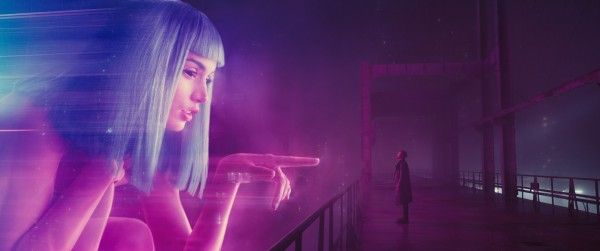If you’re a Collider regular, then you’re probably aware we’re big fans of championing all aspects of cinema here. That’s certainly true of cinematography, which is a vital piece of the puzzle that results in a great piece of filmmaking. 2017 has certainly not been lacking in great cinematography, from simply beautiful imagery to downright experimental expressions of this visual medium.
Great cinematography is, of course, far more than just pretty pictures. It’s shots that reinforce character development, it’s camera moves that are motivated by what’s happening in the scene, and it’s establishing a visual metaphor that deepens a viewer’s connection to the themes at work in the film. This is, obviously, a visual medium, and the best cinematography is the kind that does far more than simply frame up actors in a shot.
There were a number of stunning pieces of cinematography in 2017, including many that didn’t quite crack this list. From tremendously nuanced work by Sean Bobbitt in the underrated Stronger to very pretty (and haunting) imagery from Chung-hoon Chung in the blockbuster horror hit IT. So thus this list of the Best Cinematography of 2017 is but a snapshot of a much larger canvas of stellar work from a number of craftspeople throughout the year. Without further ado, let’s get into it.
10.) A Ghost Story – Andrew Droz Palermo
This is the first of two films with very little dialogue on this list, but the movies themselves could not be more different. A Ghost Story is a haunting, melancholic, ultimately beautiful piece of work from director David Lowery, and cinematographer Andrew Droz Palermo’s steady, precise photography on the film is unsettling in the best way. The carefully composed shots highlight the isolation and existential loneliness of Casey Affleck’s central ghost figure, and the fact that there’s very little dialogue and no face on Affleck’s character to play off of makes Palermo’s effective work all the more impressive. Plus, that 1.33:1 aspect ratio! Swoon.
9.) Mudbound – Rachel Morrison
Mudbound is a Southern epic through and through, and looking at this film you’d never know it was shot in a mere 28 days on an indie budget. That’s a testament to director Dee Rees’ filmmaking and Rachel Morrison’s transportative cinematography, which puts the viewer right in the middle of 1940s Mississippi. Morrison’s work here is gloriously tactile, as she conjures images that relay the heat, sweat, and of course mud that populates the environment of these characters. Moreover, Morrison finds a beautiful palette that evokes the Farm Security Administration photographers, bringing yet another level to the events that unfold on the screen.
8.) The Florida Project – Alexis Zabe
Filmmaker Sean Baker’s last film, Tangerine, famously used an iPhone to tremendous results, but for his Orlando-set drama The Florida Project Baker switched back to traditional cameras to no less stellar results. There’s a naturalism that flows through The Florida Project from scene to scene, with Baker and cinematographer Alexis Zabe using the camera to reinforce the “fly-on-the-wall” quality of the film. But the shots also reinforce the idea that this is a story told through the eyes of a child, and thus the shabby motel that Moonee calls home takes on a majestic, almost beautiful quality through Zabe’s use of framing and color. The ocean-blue sky and bright sunshine of the Orlando landscape are not just backdrops for this story, as it almost feels as if Baker and Zabe have adjusted the natural world to best suit their needs. Of course they haven’t, but that’s part of the heartbreaking beauty—and magic—of The Florida Project.
7.) Baby Driver – Bill Pope
Bill Pope is great, and yet somehow I feel he’s underrated. The guy shot The Matrix for goodness sake! His collaborations with Edgar Wright, starting on Scott Pilgrim vs. The World and continuing on to The World’s End, have been terrific thus far, and Wright threw Pope a hell of a challenge with Baby Driver. This is a film in which literally every single shot is motivated, because the entire movie is soundtracked and plays out “on the beat” so to speak. From that incredible “Harlem Shuffle” oner to the various (and delightfully dynamic) chase sequences, Pope’s work here shines. Unsurprising given that he’s one of the best cinematographers working today, but stunning nonetheless.
6.) Star Wars: The Last Jedi – Steve Yedlin
Steve Yedlin has been working with writer/director Rian Johnson since the two were making short films as teenagers, and to see that relationship build to a freaking Star Wars movie—which represents some career-best work from Yedlin—is an absolute joy. The Last Jedi is not simply a pretty Star Wars movie, it’s one in which most of the shots serve to reinforce character or thematic dynamics. But yes, it’s also incredibly pretty, as Yedlin and Johnson conjure multiple sure-to-be-iconic shots in the Star Wars canon, from that jaw-dropping Holdo scene to Kylo and Rey in the Throne Room to Luke’s reunion with…well I won’t get into spoilers, but you probably know what I’m talking about. The use of light and color in this film is brilliant, and to see such care going into each and every frame of a movie on this scale—and one in which so many shots utilize visual effects—is a delight. The fantastic end result is a testament to the artistry and steadfastness of both Yedlin and Johnson.
5.) Call Me by Your Name – Sayombhu Mukdeeprom
Cinematographer Sayombhu Mukdeeprom is not yet a household name of American cinema, but he sure could be. Working with director Luca Guadagnino for the first time on Call Me by Your Name, Mukdeeprom crafts some of the most memorable shots of the year while imbuing the entire film with a sense of voyeurism, like we’re watching this private, intimate romance between Elio (Timothee Chalamet) and Oliver (Armie Harmmer) bloom from afar. And yet there’s tremendous intimacy here despite the lack of intense closeups, and it’s Mukdeeprom’s confident handle on the imagery as well as Guadagnino’s masterful hold on what’s actually in the frame that combines to create such an emotional, empathetic experience for the viewer. Honestly, for the closing shot alone I’d consider Mukdeeprom’s work on Call Me by Your Name for this year-end list, but that he’s able to craft things like the “coming out” scene by the statue or the way he shoots Elio at the piano vaults this towards the top of the year’s best cinematography.
4.) The Shape of Water – Dan Laustsen
In keeping with the title, the cinematography in The Shape of Water is constantly flowing, moving around its actors and impeccable production design. Crimson Peak cinematographer Dan Laustsen reteams with Guillermo del Toro here to gorgeous results, and the duo make the conscious decision to never lock the camera down, ensuring that each shot mirrors the strong themes of the film. It’s del Toro’s most well-crafted film to date, in that not a single thing feels out of place, and the cinematography is always motivated while finding shots and frames so beautiful you feel like you might cry just looking at them.
3.) The Lost City of Z – Darius Khondji
There are few cinematographers working today who traffic in beauty as often and as impressively as Darius Khondji, and while his career is full of fruitful collaborations with directors, his work with James Gray has resulted in some particularly spectacular cinematography. The Lost City of Z is almost epic in scope, tracking the early 1900s explorations of Percy Fawcett into the heart of the South American jungle but also venturing to Ireland, the English countryside, and World War I battlefields. Through it all, Khondji works his magic, offering up painterly shots that reinforce the deadly beauty of the natural world. Khondji also goes 2-for-2 in jaw-dropping final shots for James Gray films, basically taking his insane final shot from The Immigrant as a challenge to himself to one-up it in The Lost City of Z.
2.) Dunkirk – Hoyte van Hoytema
Christopher Nolan has always been a visually motivated filmmaker, but with Dunkirk, it’s like the director decided to offer himself his biggest challenge yet: A dialogue-light experiential piece of cinema, where telling the story visually is everything. Reteaming with his Interstellar cinematographer Hoyte van Hoytema, the two got to work, dug deep, and crafted what will certainly go down as one of the greatest cinematic accomplishments of the 21st century. Again, this is a film where visuals are everything. You could take out the dialogue and even turn off the sound, and Dunkirk would still be an edge-of-your-seat experience. The camera is used almost as a weapon here, zeroing in on its targets with a laser focus to tell a rich, thrilling, and unbelievably tense story of heroism in the face of certain defeat.
1.) Blade Runner 2049 – Roger Deakins
Roger Deakins is the greatest. The guy is basically a wizard when it comes to lighting and framing a scene, and it’s downright criminal that he still hasn’t won an Oscar. Blade Runner 2049 certainly makes the case, as it’s some of the best work of Deakins’ career, crafting a dynamic, isolated future-scape which is basically just breathtaking image after breathtaking image. But of course beauty isn’t only what makes great cinematography great, and the choices Deakins makes here not only capture the phenomenal production design and costumes in all their glory, but also underline the precarious positions of the lead characters. Deakins finds a number of ways to highlight the loneliness of Ryan Gosling’s K with simple framing or lighting choices, that yes could probably be printed out and hung up as a piece of art as well. It’s this balance between downright gorgeous imagery and motivated, purposeful camerawork that makes Blade Runner 2049 the best-shot movie of the year.
Honorable Mentions: A Cure for Wellness, Darkest Hour, Hostiles, IT, Lady Bird, Stronger
*Note: I have not seen Phantom Thread due to lack of screening availability.
For all of Collider’s Best of 2017 content, click here, or peruse our recent links below:

